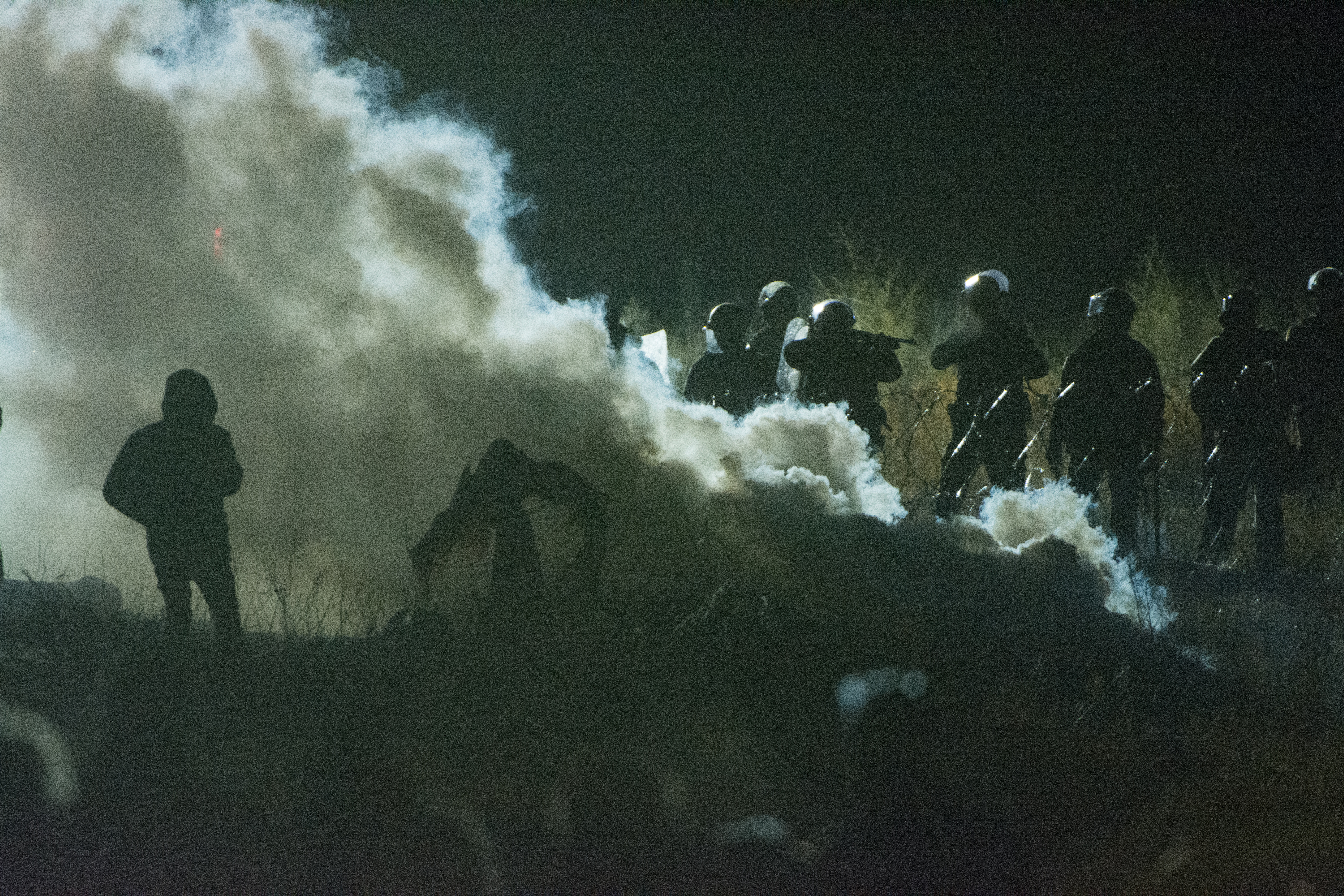The Army Corps of Engineers gave remaining Dakota Access Pipeline protesters until 2 p.m. on Feb. 22 to leave Standing Rock in North Dakota, ending what protesters said was a short-lived victory for Native American sovereignty and self-determination.
Before President Donald Trump’s inauguration, the Army Corps of Engineers agreed to look for alternative routes for the controversial pipeline, which for the past several months has drawn thousands of protestors to the edge of the Standing Rock Sioux Tribe reservation near Cannonball, North Dakota.
Utah academics have expressed concern that the process has reinforced historical notions that tribal land can be encroached upon by the U.S. government, despite the fact that Native American reservations are considered to be foreign countries under the Constitution.
The Army Corps under President Obama allowed a historically unprecedented victory for Native Americans in early December by agreeing to find an alternative route, but President Trump signed an executive order on Jan. 24 reviving the pipeline’s construction along the original route, which will cross under the Missouri River. The river is the primary water source for the Standing Rock Sioux.
The pipeline will also pass through land that belongs to Native Americans, according to the 1851 Fort Laramie Treaty.
Similar incidents in history have not ended in favor of Native Americans, such as the Pick-Sloan Missouri Basin Plan in the 1940s. The project built a dam on Lake Oahe, which connects to the Missouri River, in order to control flooding. The reservoir flooded Native American agricultural and grazing land and required the relocation of hundreds of families, according to The National Park Service. Construction of the project, also by the Army Corps of Engineers, violated the Fort Laramie Treaty and the 1944 Winters Doctrine respecting tribal sovereignty.
The Dakota Access Pipeline will be at least 92 feet below the lake bed, deeper than eight existing pipelines, according to Dakota Access Pipeline Facts.
Native Americans and their sympathizers say the issue is not environmental; rather, the issue is one of tribal sovereignty. They claim that proceeding with the project would be unconstitutional.

Utah State University associate history professor Colleen O’Neill said tribal sovereignty is a three-pronged issue: the right to govern one’s community, the ability to preserve one’s culture and the right to control one’s own economy.
“Sovereignty is about them making those decisions,” O’Neill said.
BYU law professor Michalyn Steele of the Seneca nation said tribal sovereignty doesn’t quite fit in with the structures of federal and state government. She said federal and state governments derive their power from the people, but tribes do not.
“(The tribes’) powers predate the Constitution,” Steele said. “They were sovereigns before the United States was the United States.”
Tribal nations are categorized as foreign countries in the Constitution. Steele said this indicates the tribes’ brand of sovereignty requires the same nation-to-nation relationship the United States would have with any other country.
Historically, Steele said, the federal government only recognized tribal sovereignty when it was beneficial to them.
“Now, when (some action) may not be beneficial to (the United States) but it’s still beneficial to the tribes, are we willing to live with the doctrine that tribes have a measure of sovereignty?” Steele said.
Westminster College professor James Singer of the Navajo nation said tribal sovereignty is simply the ability for Native nations to decide how they want to structure their societies.
“We need to elevate tribal sovereignty,” Singer said.
O’Neill, Steele and Singer all cited meaningful consultation as a way to honor tribal sovereignty and avoid future conflicts.
“A lot of tribes feel like they are consulted only after the fact as a courtesy, not as an equal player,” O’Neill said.
Steele said federal and state governments have a legal obligation to consult with Native nations on projects that will affect them heavily, according to federal and international law.
BYU associate English professor Mike Taylor said consultation with tribes and statements of support are not enough to make a change in relations with Native Americans.
“It would take politicians and lawmakers that are actually willing to make difficult decisions and change up our systems that are built around diminishing tribal sovereignty and marginalizing Native peoples,” Taylor said.
Encouraging the growth and development of Native Americans has a complicated history.
“What you see is this pendulum swinging back and forth of whether we were going to, as the United States, were going to tolerate tribes being tribes, and having a kind of separate identity, or whether we were going to force them to abandon tribal identity and force assimilation,” Steele said.
Singer expressed dismay over the history of attempted assimilation of Native Americans in the U.S.
“The assimilation process itself has been really detrimental to Native societies,” Singer said.
Assimilation refers to policies in the past which have forced Native Americans to adopt government policies for education, health practices and other fundamentals. Taylor defined assimilation as the idea that federal government knows better than Native American government in how to govern the Native American people.
Singer said he believes Native Americans should be given the power and sovereignty to decide on these important issues individual to each nation.
“Will it succeed? I don’t know,” Singer said.

It will take time and it will take serious change, some of which might be uncomfortable. It will require listening to Native Americans and reacting to what they say, according to both O’Neill and Taylor.
“It’s a difficult process, but it’s a worthwhile project,” Singer said.
The Standing Rock Sioux are organizing a march on Washington D.C. for March 10 to protest the renewal of the Dakota Access Pipeline project and the violation of Native American land rights.
(Timeline created by Zoe McGinn)




